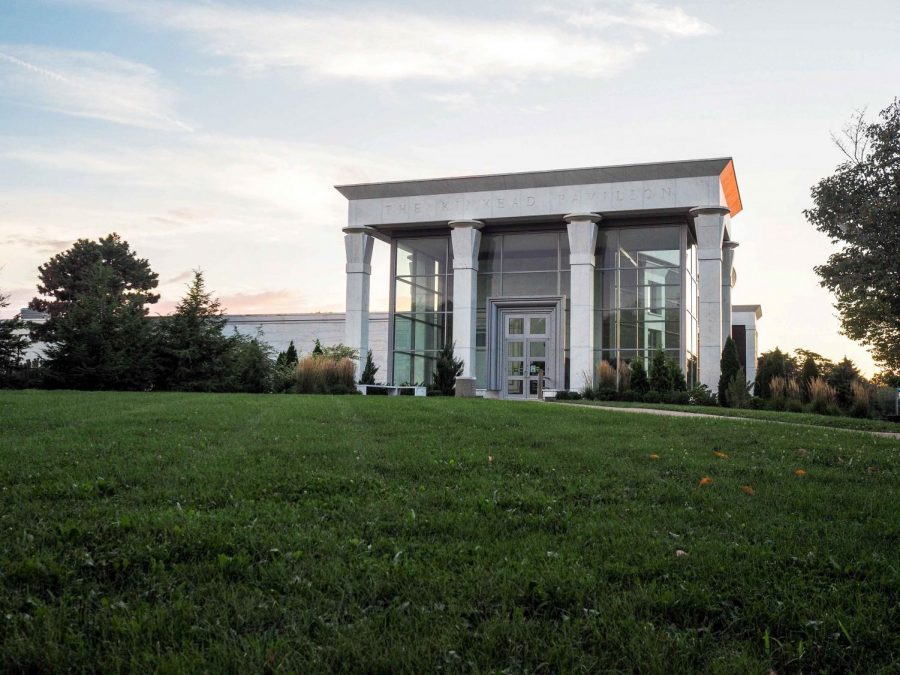Esteemed grad’s photography exhibit opens at Krannert Museum
The Krannert Art Museum sits on August 20, 2016. The museum opened a new exhibit on Nov. 5 entitled “Bea Nettles: Harvest of Memory.”
Nov 9, 2020
Last updated on Nov. 10, 2020 at 02:06 p.m.
After recently renovating its East Gallery, the Krannert Art Museum opened a new exhibit on Nov. 5 entitled “Bea Nettles: Harvest of Memory,” a large-scale retrospective featuring over 150 works and documenting the 50-year career of Bea Nettles, a renowned photographer, former graduate student and professor at the University. The exhibit will be open and accessible to the public until March 6.
The exhibit was originally displayed at the Sheldon Art Gallery in St. Louis and George Eastman Museum in Rochester, curated by Olivia Lahs-Gonzalez and Jamie Allen, respectively. Amy Powell, the curator of modern and contemporary art at KAM, quickly agreed to host it because of the unique and multidisciplinary nature of Nettle’s works as well as her connection to the University.
“Bea is a really important figure in the history of photography and the United States,” Powell said. “Not only is she a woman artist, she’s also breaking the boundaries between so many disciplines. Part of what she does is make straight photographs, but she also paints them, hand sews them and makes books that you can hold in your hand and that unfold.”
While Nettles initially began her artistic pursuits in the field of painting, she discovered she enjoyed photography after enrolling in a photography class as a senior at the University of Florida because of the inherent element of self-portraiture that comes with the art of photography.
Get The Daily Illini in your inbox!
Drawing upon her skills in both painting and printmaking, Nettles was able to experimentally blend disciplines using techniques like photolithography and silkscreen long before the creation of Photoshop.
“I put myself — my own image of myself — in many implausible situations,” Nettles said. “Because I’d been trained as a painter, I had no problem cutting up photos and gluing them together. I even sewed them on the sewing machine, which was incredibly radical in the early 70s, but I was hand coloring, cutting them up, sewing them on the sewing machine, putting them on fabric and doing all sorts of things.”
“Harvest of Memory” is organized and structured around three themes prevalent in Nettles’ works: nature and landscape, motherhood and family, and mythology and self-portraiture. However, the structuring is not rigid, so as to allow the audience to interpret the works on their own terms and because some works can be categorized into more than one theme, according to Powell.
“We want people to understand the artwork on their own terms, to sort of interpret the works as they encounter them,” Powell said. “So the themes are there, but they’re not written like that.”
As a result of the COVID-19 pandemic, parts of the exhibit have been digitally relocated to KAM’s website in order to allow a greater number of people to interact with the exhibit.
“Because of the pandemic, we’ve migrated a number of digital interpretations to kam.illinois.edu,” Powell said. “There’s videos of her book, there’s a walk through a cemetery. There’s all kinds of different ways to interact with the exhibition.”
In the presence of the pandemic, KAM has been continuing its operations under new regulations. Some of these include a limit of 25% occupancy and a recently created reservation system, according to Julia Nucci Kelly, assistant director for marketing and communications at KAM.
“If (individuals) were going to just walk into the museum (as opposed to reserving a time), we ask them to use the sign-in sheet where they give their name and either an email or phone number so we can keep track of how many people are coming,” Kelly said. “The museum has always been free, so we never really had check-in procedures. This is definitely something that’s new and a requirement to operate in the state right now.”
Through “Harvest of Memory,” Powell hopes that the audience will better understand Nettles’ experimental techniques and how they were made possible without the use of technology.
“I hope the audience will gain a sense of what is possible,” Powell said. “It’s incredible how Bea developed an innovative way and in many cases invented entirely new ways of making photography. (Through this exhibit, it’s also possible to gain a) sense of photography’s relationship to nature.”
Nettles echoed similar sentiments.
“I hope they get a perspective on how long ago some of these ideas began,” Nettles said. “Some of my early work was done in a process that resembles what you can do in Photoshop, but there was no such thing as Photoshop when I made these images. So I had to invent some techniques to make this possible.”






